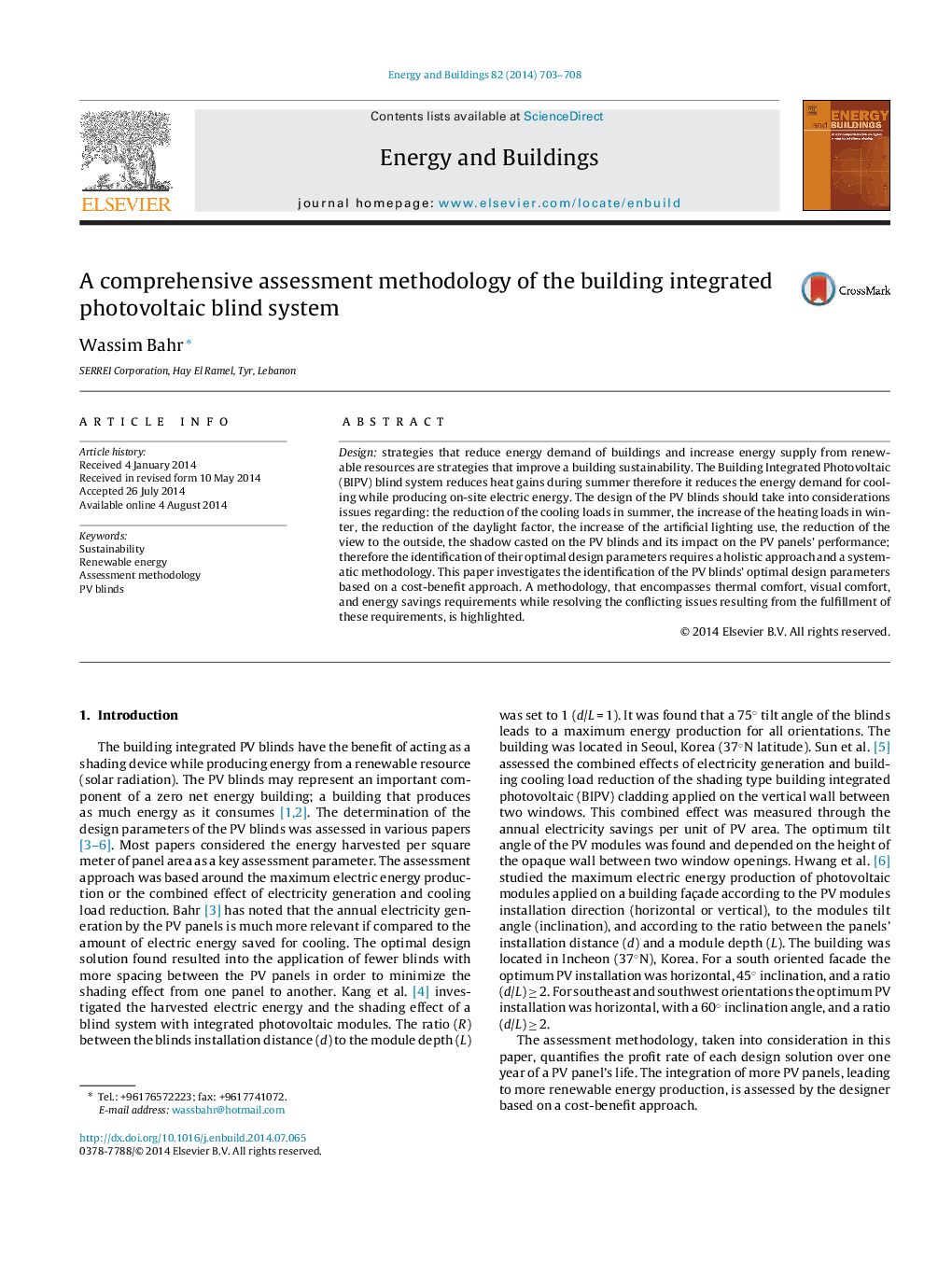| Article ID | Journal | Published Year | Pages | File Type |
|---|---|---|---|---|
| 262709 | Energy and Buildings | 2014 | 6 Pages |
Designstrategies that reduce energy demand of buildings and increase energy supply from renewable resources are strategies that improve a building sustainability. The Building Integrated Photovoltaic (BIPV) blind system reduces heat gains during summer therefore it reduces the energy demand for cooling while producing on-site electric energy. The design of the PV blinds should take into considerations issues regarding: the reduction of the cooling loads in summer, the increase of the heating loads in winter, the reduction of the daylight factor, the increase of the artificial lighting use, the reduction of the view to the outside, the shadow casted on the PV blinds and its impact on the PV panels’ performance; therefore the identification of their optimal design parameters requires a holistic approach and a systematic methodology. This paper investigates the identification of the PV blinds’ optimal design parameters based on a cost-benefit approach. A methodology, that encompasses thermal comfort, visual comfort, and energy savings requirements while resolving the conflicting issues resulting from the fulfillment of these requirements, is highlighted.
